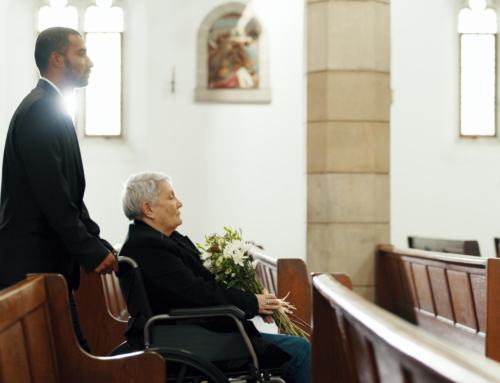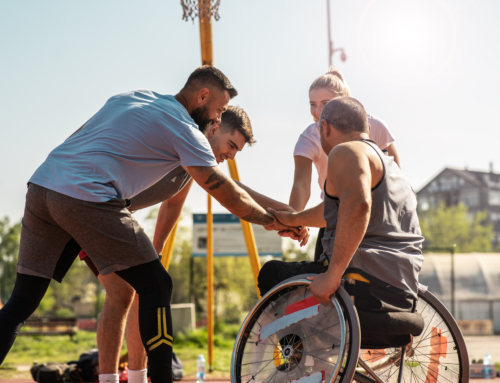Act 1: buying boots
The single boot on the clearance rack fit my daughter perfectly. These boots were perfect: they will work as part of her Halloween costume, they will work as rain boots, and they were deeply discounted. So I walked over to the sales person and asked if she could get the mate from the storage room. She took the boot I held out and promised to be back.
My husband and daughter found a couch nearby while waiting, but I stayed exactly where I was so the salesperson could find me. I sat down on my walker and waited.
Eventually she came back with both boots and was walking toward me. She was obviously looking for me standing there; she was gazing all around. It was as though I had disappeared. I tried to catch her eye but she was looking right over my head.
As she walked directly at me, about 10 feet away, I called out “I’m here.”
She heard my voice and looked around again, a confused look on her face. She didn’t see me but continued to walk in my direction. When she was about 8 feet away I said “right in front of you.” She still didn’t see me and looked even more confused but continued forward.
As she reached about 6 feet away I started to stand up. She was visibly startled as I rose into her gaze. She finally saw me.
I took the boots and paid.
Act 2: popping balloons
We were at a fall fair and there was a small crowd waiting at the balloon dart game. I gave my daughter a five dollar bill and urged her to wait her turn in line.
The time came, she stepped up, and paid the carnival worker for three darts. One, two, three throws, and unfortunately three misses. We had seen this exact scenario several times already and knew that she would be given extra darts, one at a time, continuously, until she popped a balloon. This was a “prize every time” game.
Instead the worker called to me, sitting behind her. He offered me some darts as a “special customer” and I declined, explaining “this is her thing. She can do it.” He persisted though, stating “but I really want you to have a chance” and no matter what I said he would not give up.
I relented, threw a dart, popped a balloon, and handed the remaining two back to my daughter.
We walked away with a much larger prize than we had seen anyone else win at that booth.
Conclusion: how we perceive each other
These two stories may seem quite different – in the first I was overlooked and in the second I was singled out – but the experience of both was similar. Sitting on my walker meant that I was perceived differently than the people around me. I didn’t register to the saleswoman as a person, and to the carnival worker I was an object of charity. Neither had any ill intent but I definitely felt othered.
That’s what ableism does. Like other forms of discrimination, it divides based on difference and clearly communicates that there is a preferred way of being.

I have walked (or rolled) on both sides of that divide; first as a nondisabled professional supporting people with disabilities, and now as a disabled person who still works in the disability field. I am grateful for experiences like this because, though they are mild, they make me stop and think about the ways I perceive others.
Have I made someone feel othered, singled out, overlooked, or less than? How can I combat the tendency to see people according to socialized categories?
One way is to remember that “God created human beings in his own likeness. He created them to be like himself.” (Genesis 1:27a NIRV)
All human beings. No matter what category the world might place us in, we each reflect the image of God and are worthy of love and respect.
May I carry that knowledge forward and see others in that light.


